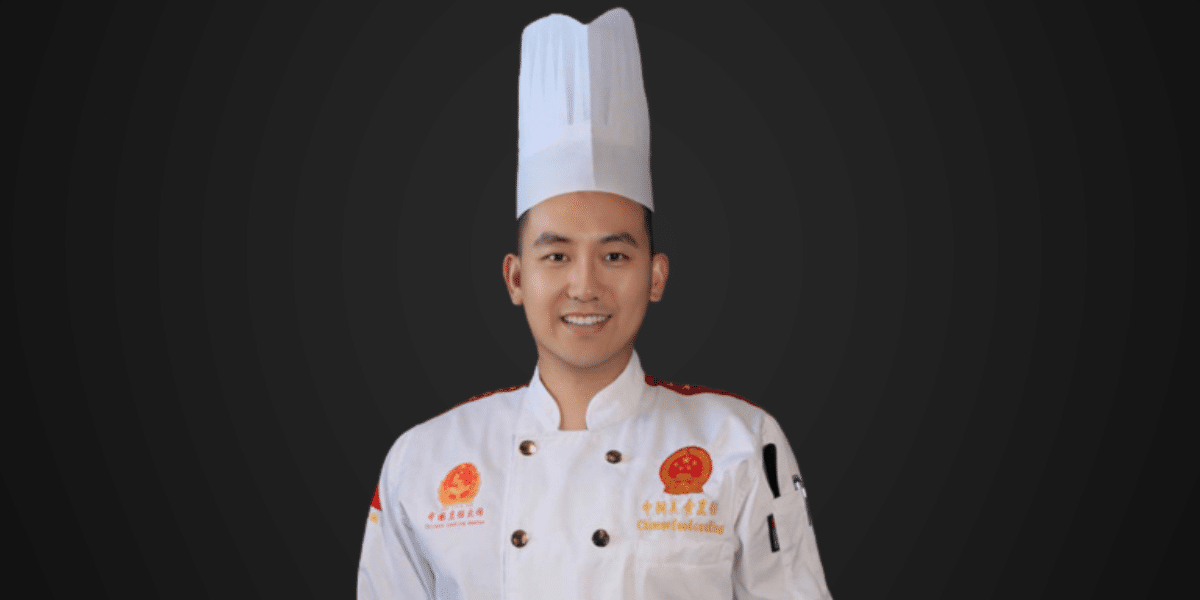Using Chef Donghui LI as an Example to Explore the Collision and Innovation of Chinese & Western Cuisine Culture
Driven by the wave of globalization, the integration of food culture has become an inevitable trend, and American fusion cuisine is undoubtedly one of the products of this cultural collision. By combining the fine skills of Chinese cuisine and the characteristics of Western food ingredients, American fusion cuisine has gradually become a unique way of dietary expression. This article takes Chef Donghui LI, an important representative of American Chinese-Western fusion cuisine, as an example to explore how he incorporates his cultural background, innovative spirit and cooking skills into creating and promoting American fusion cuisine.
Chef Donghui LI: From Apprentice to Cultural Ambassador
Mr. Donghui LI has a growth path characterized by challenges and opportunities in American Chinese-Western fusion cuisine. He began learning traditional Chinese restaurant cooking techniques at the age of 16 at a cooking school in China, where he acquired strong foundational skills. Over the years, he received recognition in Chinese cooking competitions, earning gold medals and being acknowledged as a notable chef in China in 2015 and 2024. These experiences laid the groundwork for his future innovations.
Later, Mr. LI traveled to Japan, the United Kingdom, Singapore, Thailand and other countries to communicate and exchange culinary culture, and then to the United States to gain an in-depth understanding of Western food culture. Through observation and practice, he discovered that there is an excellent possibility of integration between Chinese food skills and Western food ingredients. He created many Chinese-Western fusion cuisine suitable for Americans. He participated in food festivals and cultural exchange activities in many cities in the United States, allowing more people to taste this unique cross-cultural delicacy.
The Innovative Cornerstone of Chinese-Western Fusion Cuisine
The Collision of Skills and Ingredients
Mr. LI knows that the skills of Chinese cuisine focus on heat, knife skills, and seasoning, while Western cuisine focuses on precise recipes, unique ingredients, and well-organized plating. He combined these two advantages to create many classic fusion dishes. For example, he combined traditional Chinese roast duck with Western salad and launched the “roast duck salad”, which not only retains the charred fragrance and tenderness of roast duck but also gives it a refreshingly modern feel.
Integration of Culture and Stories
In addition to the combination of skills, Mr. LI also pays attention to incorporating cultural stories into the dishes. For example, the “Wuyi Fragrance Waves – Chilean Cod with Caviar and French Herb Foam” he designed was inspired by Chinese Dahongpao tea and combined with Western French herbal foam, which vividly interprets the fusion of Eastern and Western cultures.
Exploration of Health and Sustainability
Facing the trend of health and environmental protection in the modern diet, Mr. LI incorporated more green ingredients into the dish design, such as tofu, mushrooms, and low-fat meat. He is also committed to promoting sustainable cooking methods and reducing food waste so that fusion cuisine is not only delicious but also more in line with the needs of the times.
Chef Donghui LI and the Globalization of American Chinese-Western Fusion Cuisine
The Road to Promotion from the United States to the World
Mr. LI shared his creations with many restaurants in the United States, attracting diners from all over the world. He not only successfully spread the concept of fusion cuisine in the United States but also brought this innovative concept to Europe and Asia through international food exchange activities.
Cooperation with the Younger Generation of Chefs
In order to continue the concept of fusion cuisine, Mr. LI actively cooperates with young chefs, organizes workshops and cooking competitions, and encourages more people to participate in this field. He believes that this unique form of cuisine can only occupy a more important position in the future through continuous innovation and inheritance.
Challenges and Future Outlook
Although American Chinese-Western fusion cuisine has made remarkable achievements in recent years, it also faces some challenges. For example, how to innovate while adhering to traditional tastes? How to make more local ingredients accepted and used reasonably? These problems require time and wisdom to solve.
In the future, Mr. LI plans to develop more prepared cuisine and family-friendly fusion cuisine so that more consumers can enjoy this kind of food conveniently. He also hopes to improve cooking efficiency further and reduce costs by combining with artificial intelligence and mechanized kitchen technology.
American Chinese-Western fusion cuisine is not only a kind of food but also a cultural bridge that connects the taste and emotion of the East and the West. Mr. LI’s efforts have injected vitality into this field and opened up a new path for exchanging and developing global food culture. In the days to come, this fusion cuisine may appear on the world’s dining tables in a richer form, allowing more people to feel the charm of food without borders.
Published by Mark V.














